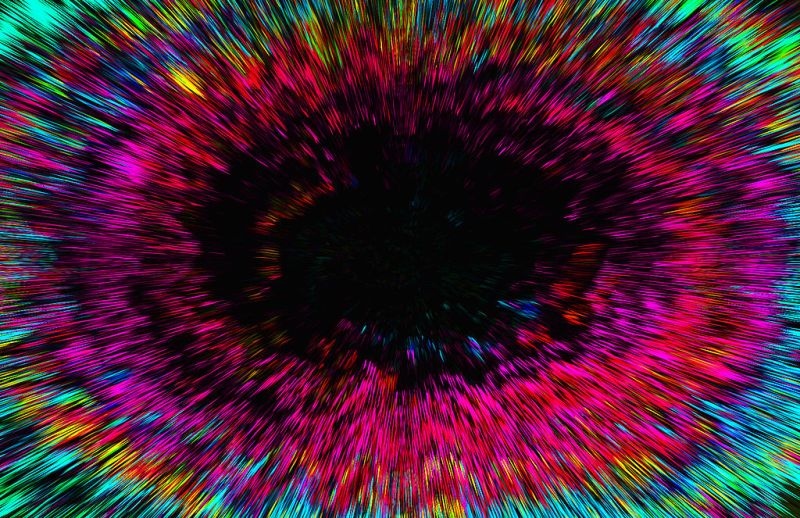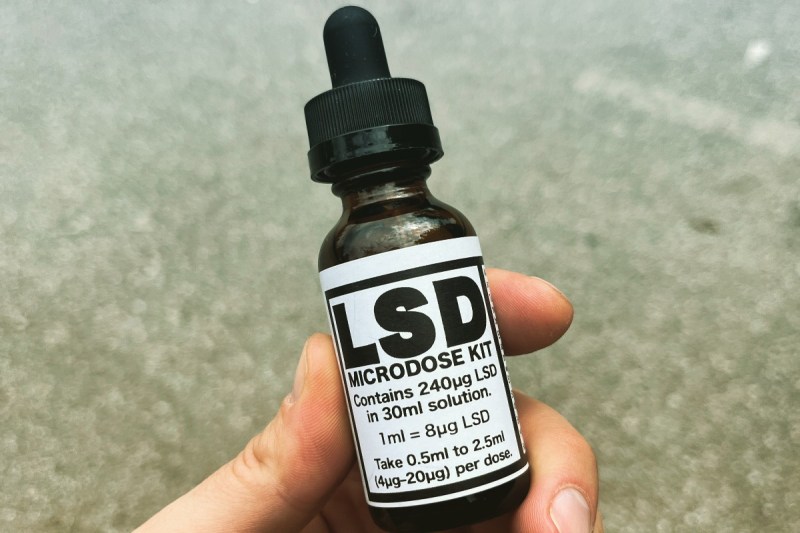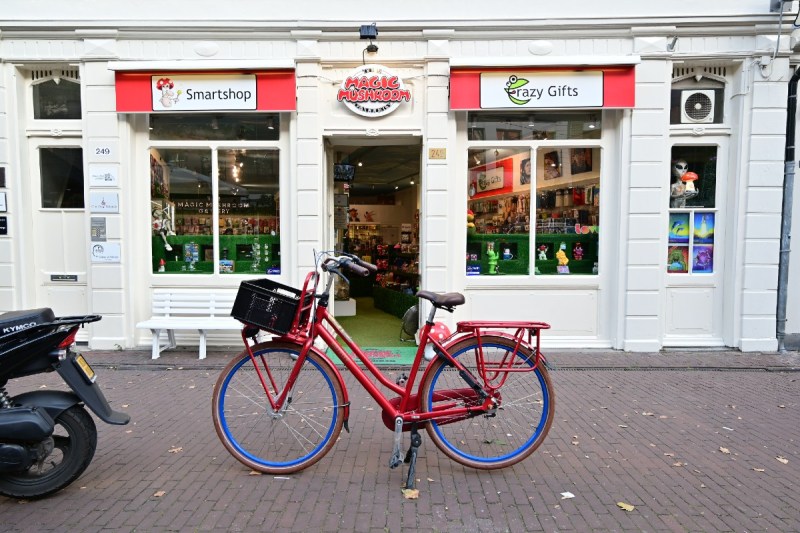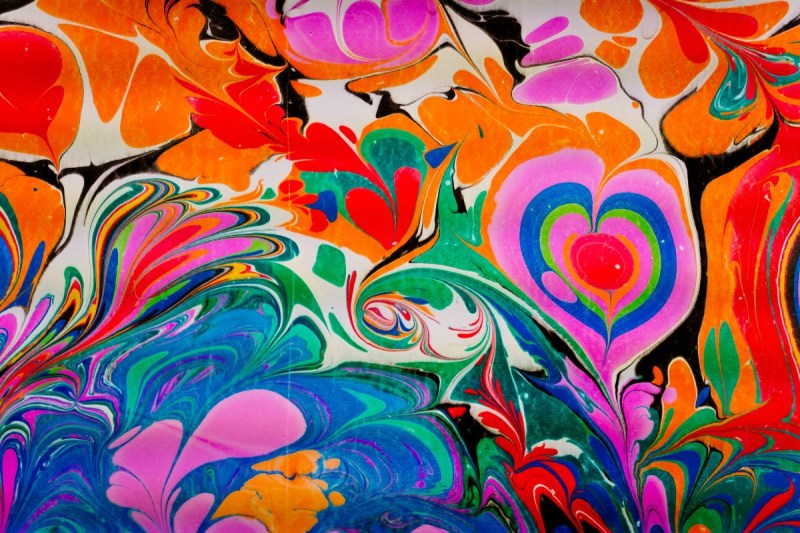
There are few experiences as downright otherworldly as LSD. In smaller doses, it has the potential to provide an astounding boost to your creativity, mood, and productivity. In large enough doses, it can transform your perception so profoundly that it will seem as if you’re in an entirely different dimension of existence (and maybe you are). Leveraged therapeutically, it can have a dramatic impact on your well-being.
Having taken it hundreds of times, I am exceedingly well-versed in the benefits of LSD as well as the many strange aspects of the experience it imparts. Let’s take a look at this unique, borderline-miracle drug with a little help from Rick Strassman, the renowned psychedelics researcher and author of The Psychedelic Handbook.

What is LSD?
The story of how lysergic acid diethylamide — better known as LSD — came into the world is appropriately unexpected and weird.
The Swiss chemist Albert Hofmann first synthesized the chemical in 1938 when he was attempting to develop something significantly more mundane. He discovered the chemical’s psychedelic properties by accident five years later after he got some of it on his skin, which resulted in a two-hour “dreamlike state.” Three days later, he intentionally dosed himself with way too much, then rode his bicycle home in what he afterward described as a somewhat terrifying experience that gradually gave way to a decidedly wonderful, enlightening experience. This was the first LSD “trip” ever, and it is commemorated by LSD enthusiasts on April 19 each year as part of a holiday known as Bicycle Day.
Over the next few decades, LSD was studied intensely by psychologists and psychiatrists who found that it could be a powerful tool in the treatment of a wide range of mental disorders. According to Rick Strassman, “LSD was the drug of choice in early studies of using psychedelics to treat a wide range of conditions in the 1950s and ’60s: Alcoholism, opiate addiction, end-of-life despair, and pain.”
After the drug became popularized by the counterculture movement, it was outlawed, effectively ending research on its potential benefits until the early 2000s.

LSD therapy benefits
While underground LSD advocates had been promoting the positive attributes of the drug all along, once opportunities for legal research began to open — largely due to promising studies on other psychedelics like psilocybin and ketamine — a number of specific benefits were quickly established.
Today, the scientific and therapeutic community has widely accepted that LSD therapy can be used to treat mental conditions like depression, anxiety, PTSD, OCD, and addiction. These benefits have been repeatedly established by wide-ranging studies. When taken in extremely small doses in a practice known as “microdosing,” LSD can improve mood, creativity, and cognitive abilities, though it should be noted that research on microdosing is still in the early stages and requires further verification.

What is the LSD experience like?
At a glance, LSD is easy to confuse with other classic psychedelics like mushrooms or MDMA in terms of the experience it delivers. It is, however, very different.
According to Dr. Strassman, “The primary difference is the duration of action. A recent European study demonstrated that in normal volunteers, the effects of psilocybin and LSD are indistinguishable except for duration of action. LSD lasts 8–12 hours, whereas psilocybin duration of action is about 5–7. LSD has a more complex pharmacology, but [it] essentially works by means of activating serotonin 2A receptors, which is how other classical compounds work.”
While the research indicates that it’s difficult to distinguish between the two, from an anecdotal perspective, I would argue that the experiences offered by psilocybin and LSD are subtly different. Many users report that mushrooms tend to feel more “natural” or “earthy,” whereas LSD can have a significantly more transformative impact on the environment around the user, producing extremely vivid hallucinations.
What’s more, the longer duration of LSD makes it an extremely unique experience. With mushrooms, the whole thing feels more compact: You go up, you peak, you come down, you go to bed. LSD, on the other hand, is a full day’s commitment. It’s quite a journey.
To get more specific, LSD tends to progress through four distinct phases:
- The come-up: You’ll usually notice its effects within 20–60 minutes as the world around you begins to appear in greater contrast. Colors become brighter, patterns begin to move subtly, and you will notice slight changes in the way you think. Some users report an almost physical sense of “rising” as if they’re on some kind of psychic elevator. Some people experience nausea or anxiety during this phase, but power through; it’s often the most difficult period of the whole experience. The effects tend to snowball with increasing elaboration until . . .
- The peak: About 90–120 minutes in, your experience will peak. This can be an extremely disorienting moment, particularly if you’re new to LSD, so I suggest having someplace comfortable to sit for about 20–30 minutes. Peak experiences vary depending on “set and setting” (more on that below) and dosage. You may see highly elaborate hallucinations, likely involving highly complex, rapidly shifting patterns. You may transcend your ego and experience what mystics refer to as “non-duality” — an all-encompassing experience of the universe that is difficult to put into words. You may have difficulty distinguishing the barriers of your body from the environment around you, and so on.
- Cruising altitude: After the peak, you usually come down a few notches. Then the experience will progress more or less linearly for several hours. Hallucinations are usually less intense during this phase, though the world around you will still appear transformed. You may experience dramatic shifts in mood, from sorrow to fear to humor. During this phase, you will likely have the most practical — or at least memorable — “realizations” regarding your life and existence in general. This is where you’re “doing the work,” to use the therapeutic parlance, and will learn a great deal about, well, everything.
- The comedown: At some point, the effects begin to wane noticeably. You may begin to feel a bit tired. The hallucinations diminish, your thought processes ease into more typical parameters, and somewhat suddenly, you will “snap out of it.” You will likely feel a bit wobbly until you fall asleep.
While this progression is pretty reliable, the specifics of your experience can be highly individual.
As Dr. Strassman puts it, “It’s all about set, setting, and dose. I describe how to optimize benefits and minimize risk in my most recent book, The Psychedelic Handbook.”
The aforementioned book should be on your reading list if you want to go into the experience as thoroughly prepared as possible, but to explain the concept of “set and setting” briefly:
- Set: This is what you, as an individual, bring to the experience. It’s your mental state, physical health, and personal history. You can help to bolster your “set” through education, a mind calmed by meditation or yoga, healthy eating habits, and so on. It also helps to bring a sense of focus or intention to your psychedelic experience via pre-trip reflection, journaling, art production, that sort of thing.
- Setting: This is everything around you, from the people participating in the experience (whether they’re sober or taking the drugs too), to the location, to the material items at hand. You can create the proper setting by choosing a location that offers legal and physical safety, choosing a guide or companions who are in the proper “set” themselves, and surrounding yourself with supportive material goods like aesthetically pleasing art, spiritual icons, music, and simple yet healthy foods like fruit or bread. Access to nature is always a plus.
By creating the appropriate “set and setting,” you vastly decrease your odds of having the much-maligned “bad trip.” Don’t let worries about a bad trip deter you, however, as studies have repeatedly shown that LSD users who undergo them benefit from them more often than not. Nearly 40% say it was among the most important experiences of their lives while upwards of 80% consider it an ultimately positive experience.
Typically, after a lengthy, full-dose LSD experience, you’ll feel an “afterglow” effect for a few days, during which you will feel abnormally serene and good-natured. You may feel highly reflective and even insightful. During this period, it’s a good idea to perform what is known in LSD therapy circles as “integration,” during which you journal, meditate, create art, or otherwise consider your experience with the intention of integrating what you’ve learned into your day-to-day life.



